Morocco part two
MOROCCO
“Travel. Because money returns. Time does not.”
MEKNES COMMUNITY LUNCH
Our tour through Morocco included a G Adventures-supported traditional lunch that benefits rural Moroccan women and children. I chose G Adventures because of its policy to support local initiatives. The fact that they are a Canadian company, for me, was a bonus.
The Meknes Community lunch was inspiring and fun. We not only learned about the program, which helps provide vocational training for rural women but enjoyed an excellent home-cooked meal. We were also given the opportunity to purchase locally made wares.
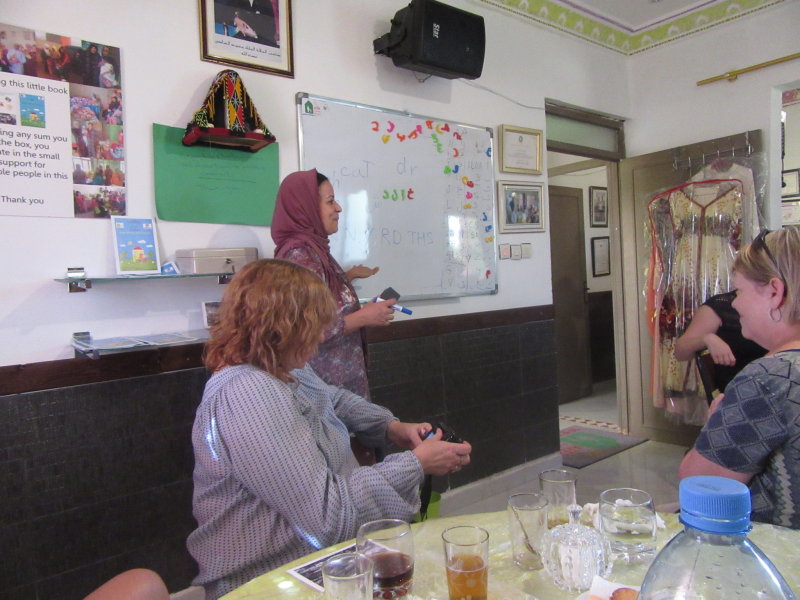

These young girls wanted us to take their picture. They were so cute. I found it surprising as the majority of Moroccans did not want their picture taken
TODRA GORGE
Pictures do not do the scenery justice. It is absolutely stunning. The gorge is a serene river canyon wedged between 600 m massive cliff walls. There are stores selling food and of course souvenirs. If you are up to the challenge, you can walk the 14 km (8.5 Mile) walk from the town of Tinghir.
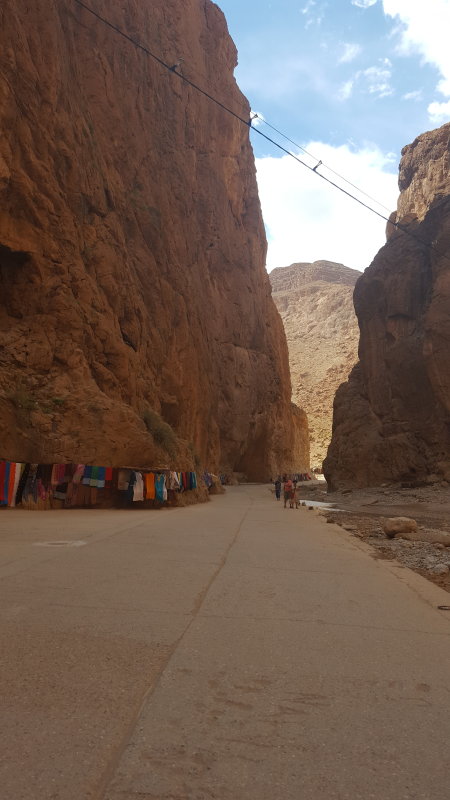

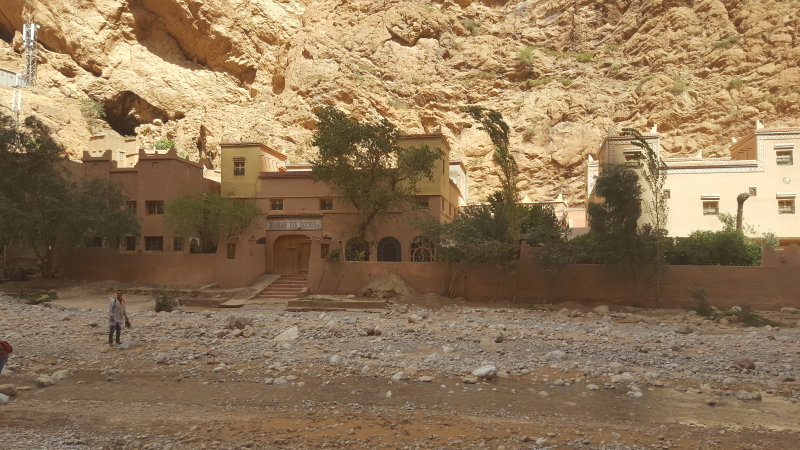
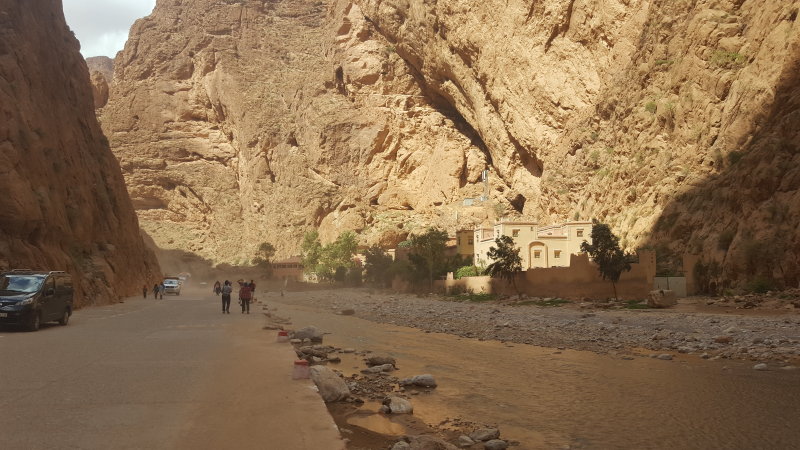


HIGH ATLAS MOUNTAINS
We arrived in the village of Imlil. The plan was to hike to the village of Aroumd which is at the base of the High Atlas Mountains. Our luggage would be transported by mule. The hike would take approximately one hour. We would then spend the night in a simple gite. A Moroccan gite is a very basic Berber accommodation. Think Hostel.
It was not to be. With reports of a rainstorm heading our way, our guide decided to consult the tour company’s headquarters to ask what their advice would be. If the rainstorm materialized, we could be stuck up in the mountains for at least a day or two. The decision was made to not go up to the gite. Instead, we were given the option to stay an extra night in Essaouira, our next stop.
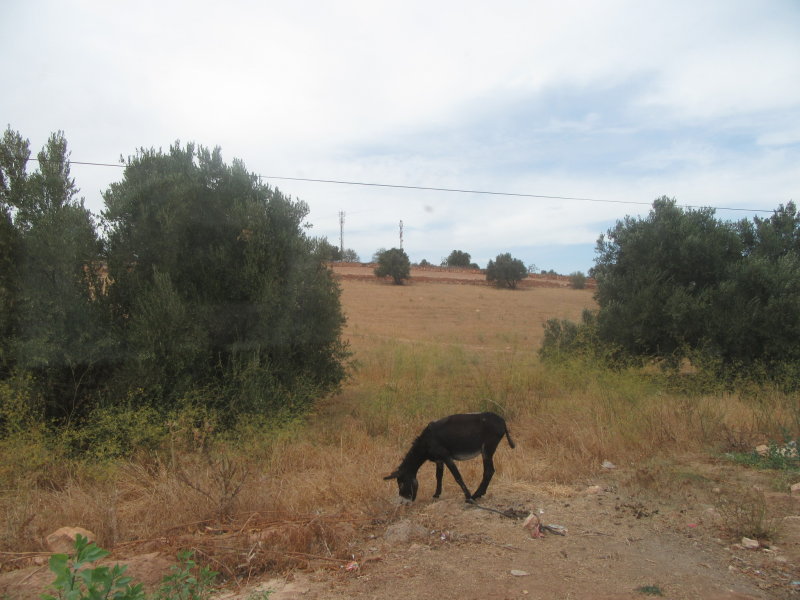
This lone mule was spotted and we asked the driver to stop. Some people had bought carrots to feed the mules for the trip up the mountain and because it was cancelled decided to feed this one instead.
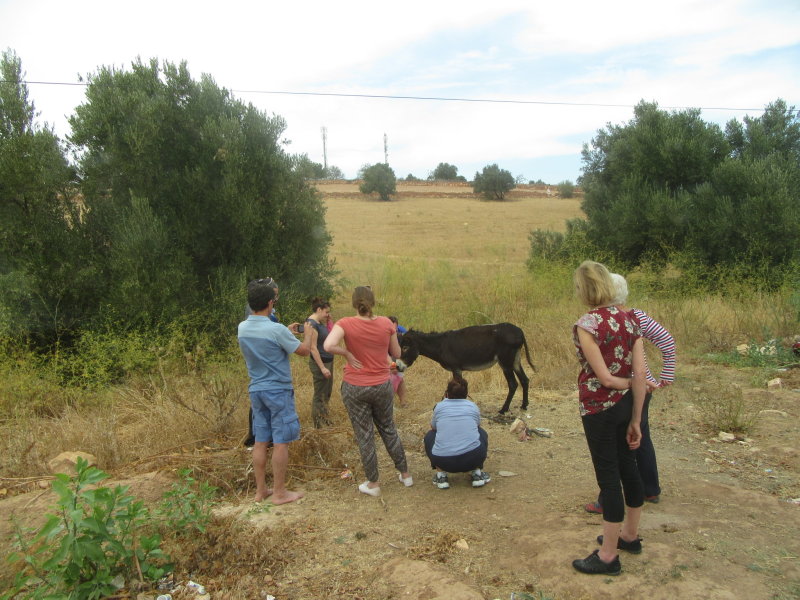
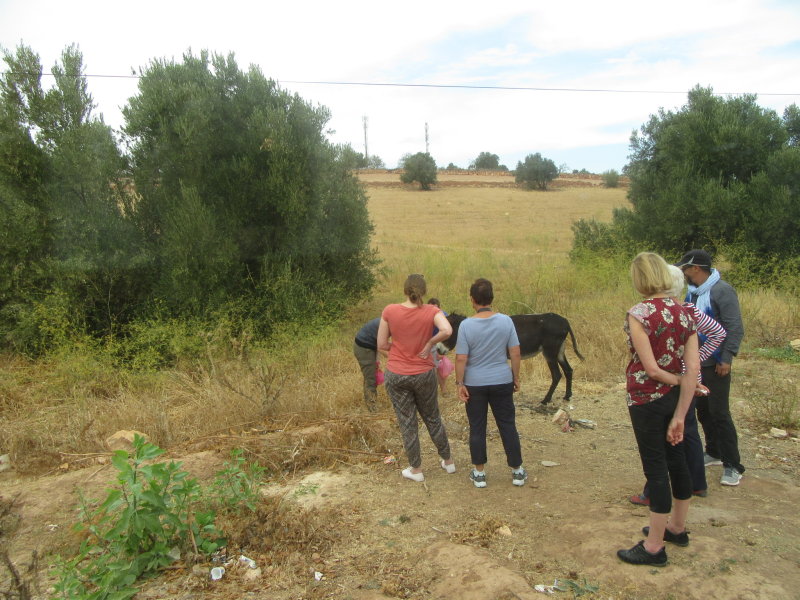
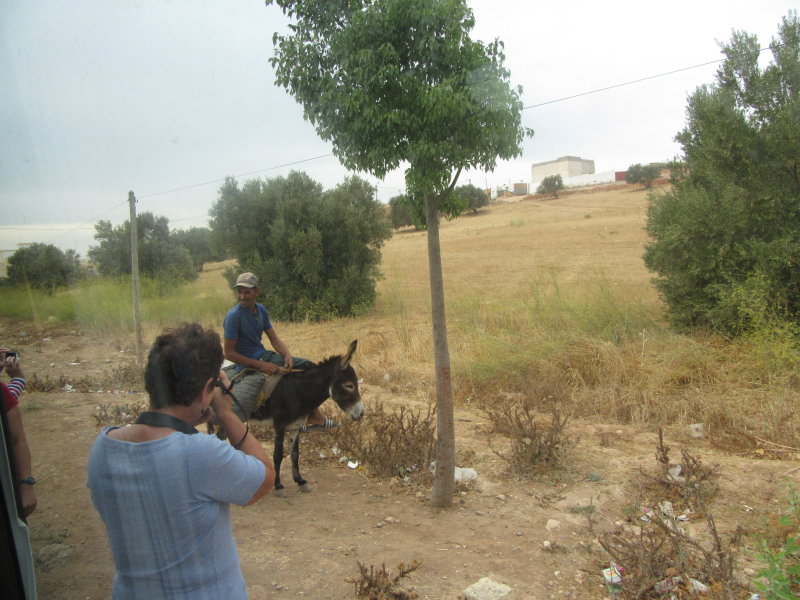
The owner arrived to see what was going on with all these tourists!

Of course, his mule got a treat as well.
COOPERATIVE MARJANA
On our way to Essaouira, we made a stop at the Cooperative Marjana. This is an Argan product store run by women which you would not expect in a male-dominated society. This is a huge stride for these women.
Excerpt from Wikipedia:
“Argan oil is a plant oil produced from the kernels of the argan tree that is endemic to Morocco. In Morocco, argan oil is used to dip bread in at breakfast or to drizzle on couscous or pasta. It is also used for cosmetic purposes.
Extraction
Extraction is key to the production process. To extract the kernels, workers first dry argan fruit in the open air and then remove the fleshy pulp. Some producers remove the flesh mechanically without drying the fruit. Moroccans usually use the flesh as animal feed. A tradition in some areas of Morocco allows goats to climb argan trees to feed freely on the fruits. The kernels are then later retrieved from the goat droppings, considerably reducing the labour involved in extraction at the expense of some potential gustatory aversion.[4][5] In modern practice, the peels are removed by hand.[6]
The next stage involves cracking the argan nut to obtain the argan kernels. Attempts to mechanize this process have been unsuccessful, so workers still do it by hand, making it a time-consuming, labour-intensive process. Berber women often engage in this arduous task.
Workers gently roast kernels they will use to make culinary argan oil. After the argan kernels cool, workers grind and press them. The brown-coloured mash expels pure, unfiltered argan oil. Finally, they decant unfiltered argan oil into vessels. The remaining press cake is protein-rich and frequently used as cattle feed.[3]
Cosmetic argan oil is produced almost identically, though the argan kernels are not roasted to avoid an excessively nutty scent.
The decanted argan oil is left to rest about two weeks so the suspended solids settle to the bottom. The clearer argan oil is further filtered, depending on the required clarity and purity. Pure argan oil may contain some sediment.”
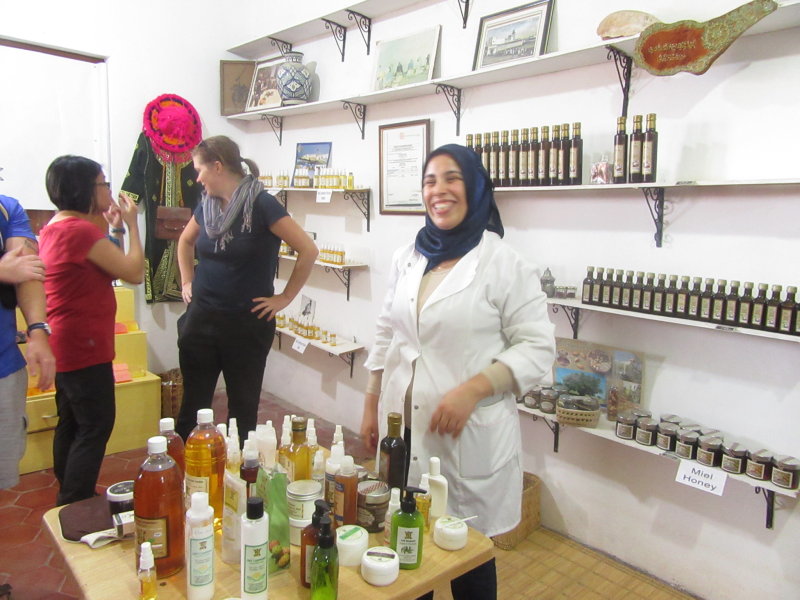

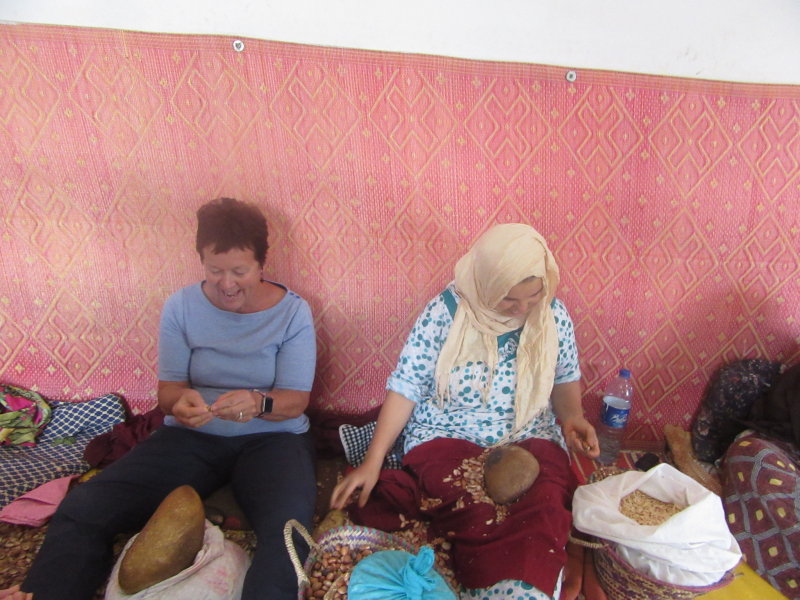

ESSAOUIRA
As the tour company described in their brochure, “Essaouira is a funky, Portuguese-flavoured, hippie, coastal village.” And it is. The first thing we saw was the harbour. It was different from what I have seen. One of the little restaurants that were recommended was a simple outdoor seating with wood benches and tables. You go to the cooking area and choose what they caught straight from the sea, and then take a seat and wait for your charcoal cooked food. It was good. You can also take a walk along the long sandy beach or, as a few of our group did, go for a camel or horseback ride.
From the harbour, you head over to a big open square. At the other side of the square, is the walled medina. When you enter the medina, it is like you stepped into another world. There are small alleyways and streets filled with shops and restaurants. I spent a couple of days exploring this laid-back town. Some of the time, I was on my own, and I felt safe. I could easily have spent another day here.


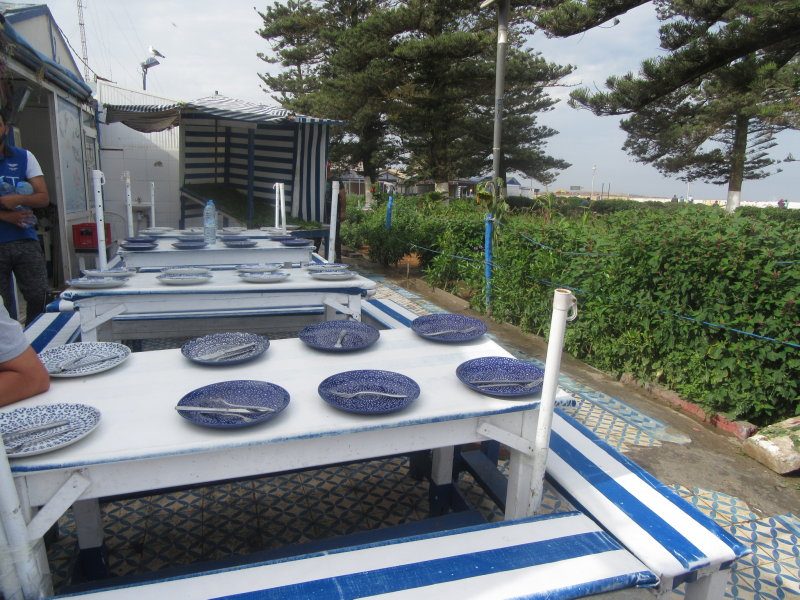
A typical restaurant at the waterfront. Good food
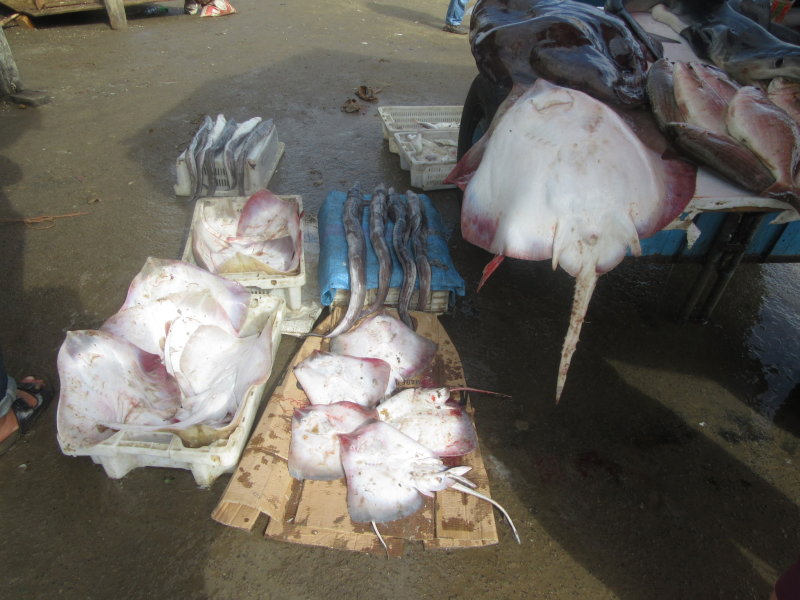

I was firmly told after taking this picture that I couldn’t take any more.

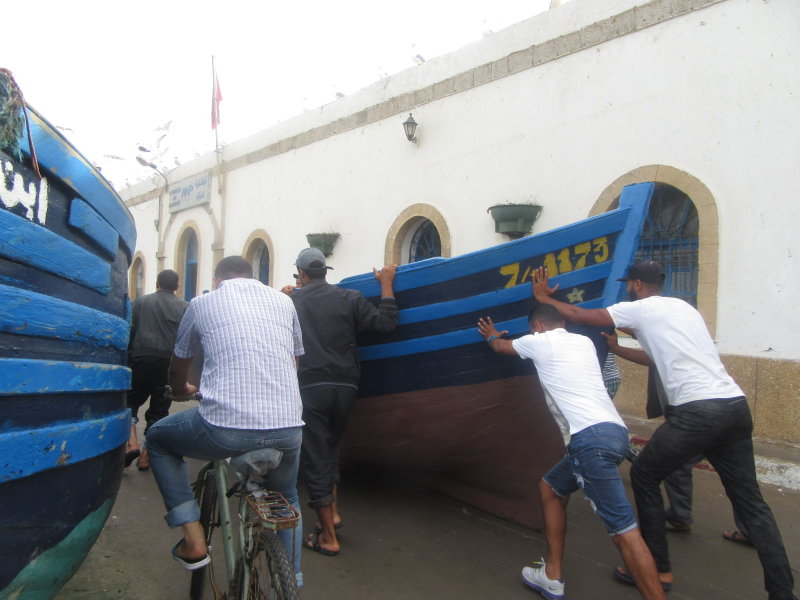

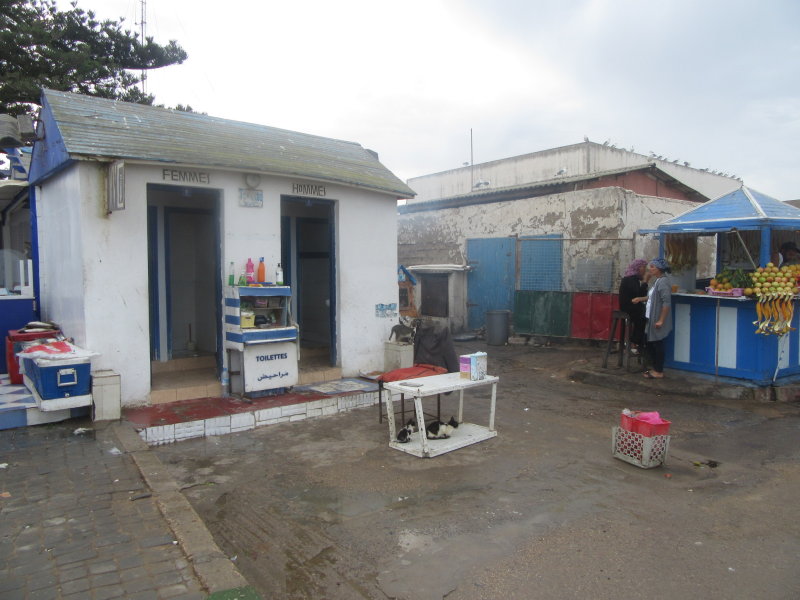
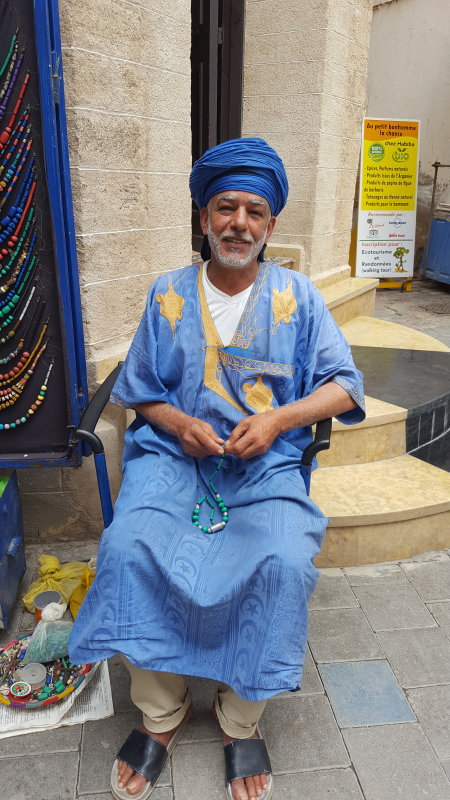
He was the only person that was willing to have his picture taken. I asked for his permission, saying that he had a nice face. He then told me I was yummy!

I found this quite funny. Having this on a bike in Morocco!
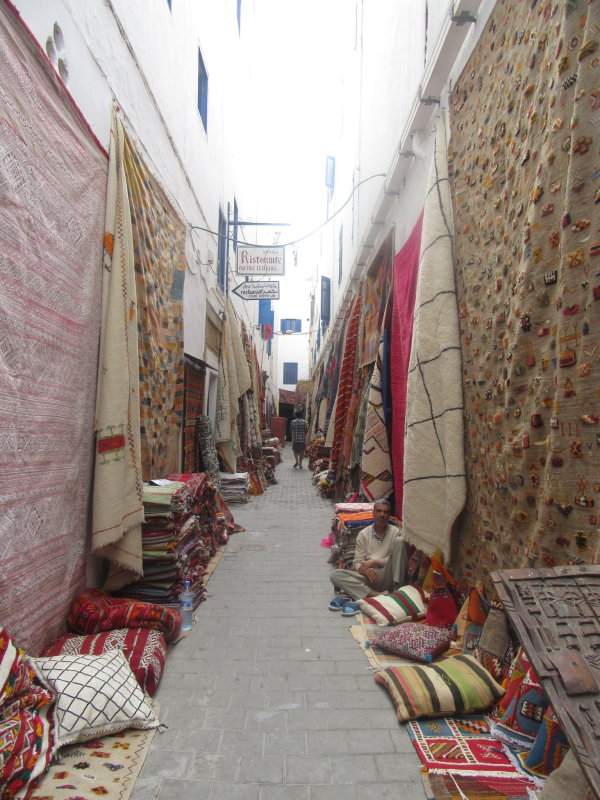

We had lunch at this restaurant. Great views and very good food.
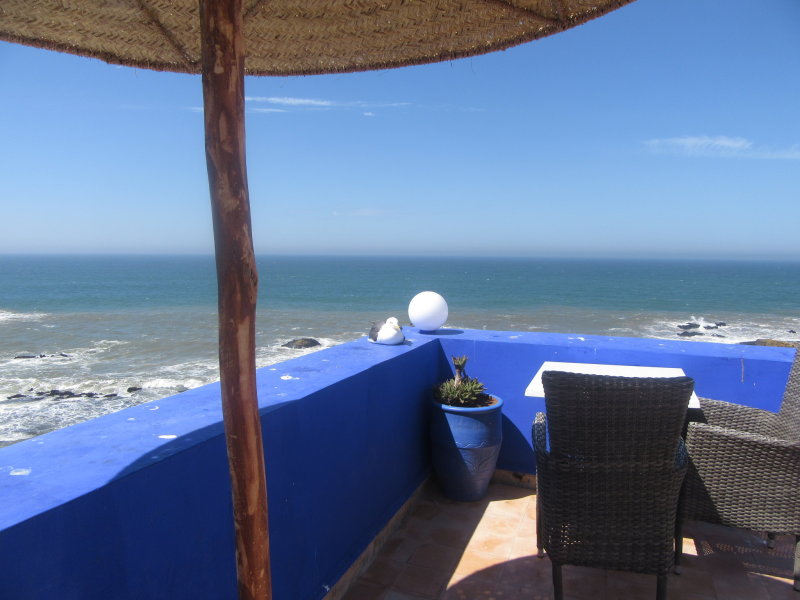
We stayed at Hotel Cap Sim. http://www.hotelcapsim.com It was a nice hotel, right in the heart of the medina.
MARRAKECH
Marrakech is a modern city which, for some reason, surprised me. I suppose because, along our travels, there were mainly towns and villages. We did, however, spend most of our time in old Marrakech. We visited the Koutoubia Minaret and gardens, Bahia Palace, the Mellah and the Saadian Tombs.
The Mellah is a walled Jewish quarter of a city in Morocco. Usually, a Mellah is situated near the royal palace or the residence of the governor. This was to offer a form of protection. The Jews flourished within the Mellah at Marrakech providing bakers, jewellers, tailors, sugar traders to name a few occupations. At present, most of the Jewish presence is gone.
The Saadian tombs was an interesting stop in our tour. The tombs are several sepulchres and mausoleums that house the remains of prominent figures, including the graves of several trusted Jewish advisers from the Saadi Dynasty between 1549 to 1659. However, Moulay Ismail, a ruler who reigned from 1672 to 1727, set about destroying many of the dynasty’s greatest buildings. When it came to the Saadian Tombs, he was fearful of committing sacrilege by destroying a burial ground. Instead, he built a wall around the tombs. The tombs lay untouched and neglected for over two centuries. In 1917, aerial photography exposed them. They were uncovered and restored.
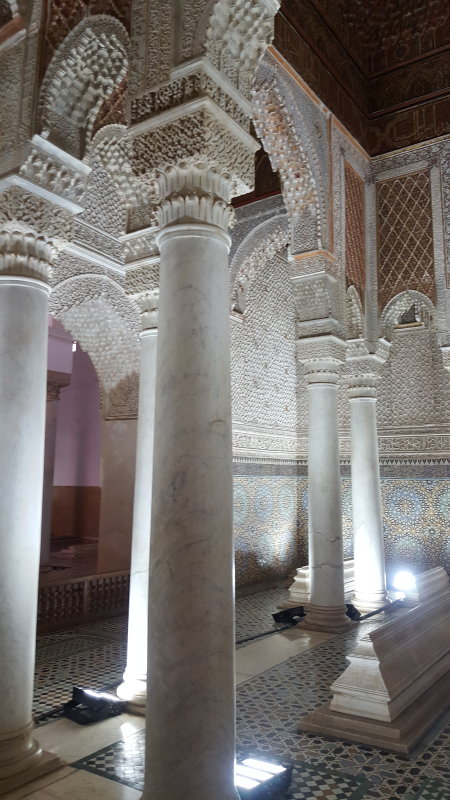
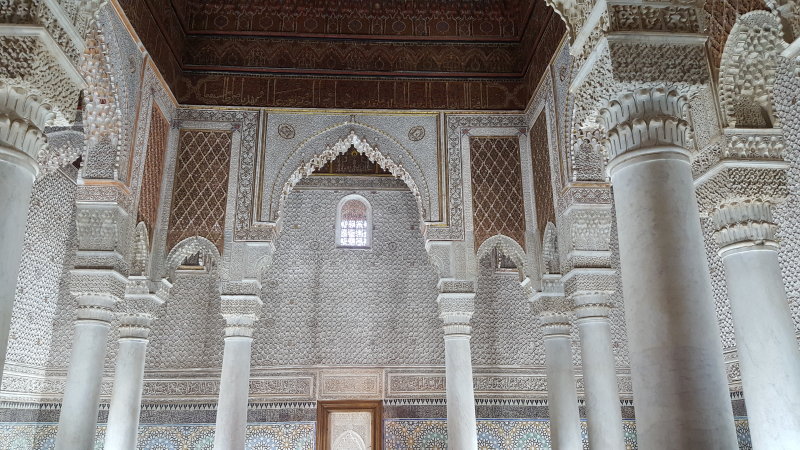

The medina in Marrakech was slightly different from the other medinas we explored. The type of merchandise available was, to me, more upscale. This was our last chance to purchase any souvenirs. The large square Jemaa El Fnaa, was almost empty, which was not surprising given the time of day. Vendors were slowly starting to set up for the market, which, from what I have understood, is enormous. There were, however, a few snake charmers and vendors with monkeys. Fortunately, our guide had warned us of the scams that the snake charmers and vendors with monkeys will try to pull. If we wanted to take pictures without being charged, we needed to stand quite a ways back and take pictures. Bother the snake and monkey vendors will try to put a snake around your neck or a monkey on your shoulder. If that happens, they expect payment.
I had the chance to go back at night but chose not to as I was leaving the next day for Portugal. Another adventure awaited.
We stayed at the Hotel Comassine. The accommodations were nice and fairly modern. http://www.hotel-gomassine.com
Last word. I had a hard time getting Moroccan currency (MAD) and was not able to acquire any for my trip. I waited until I arrived at Casablanca Airport and used the ATM.


